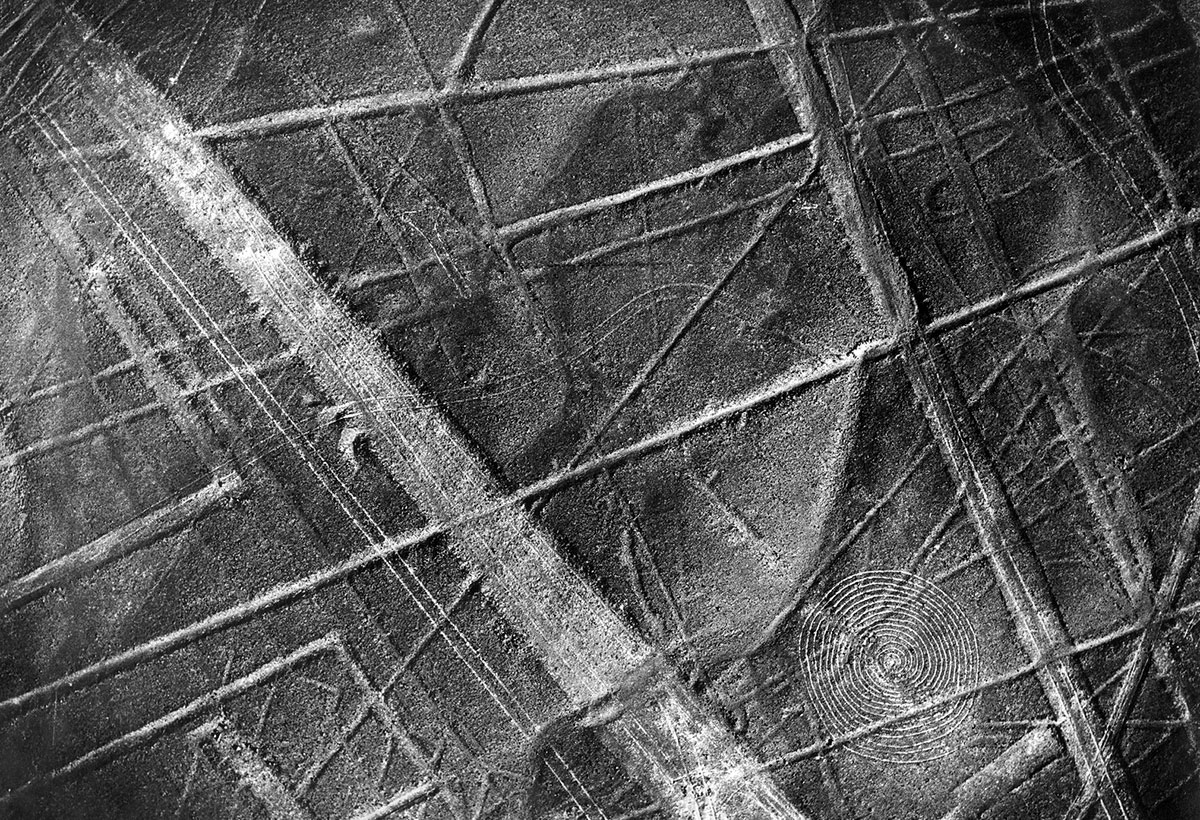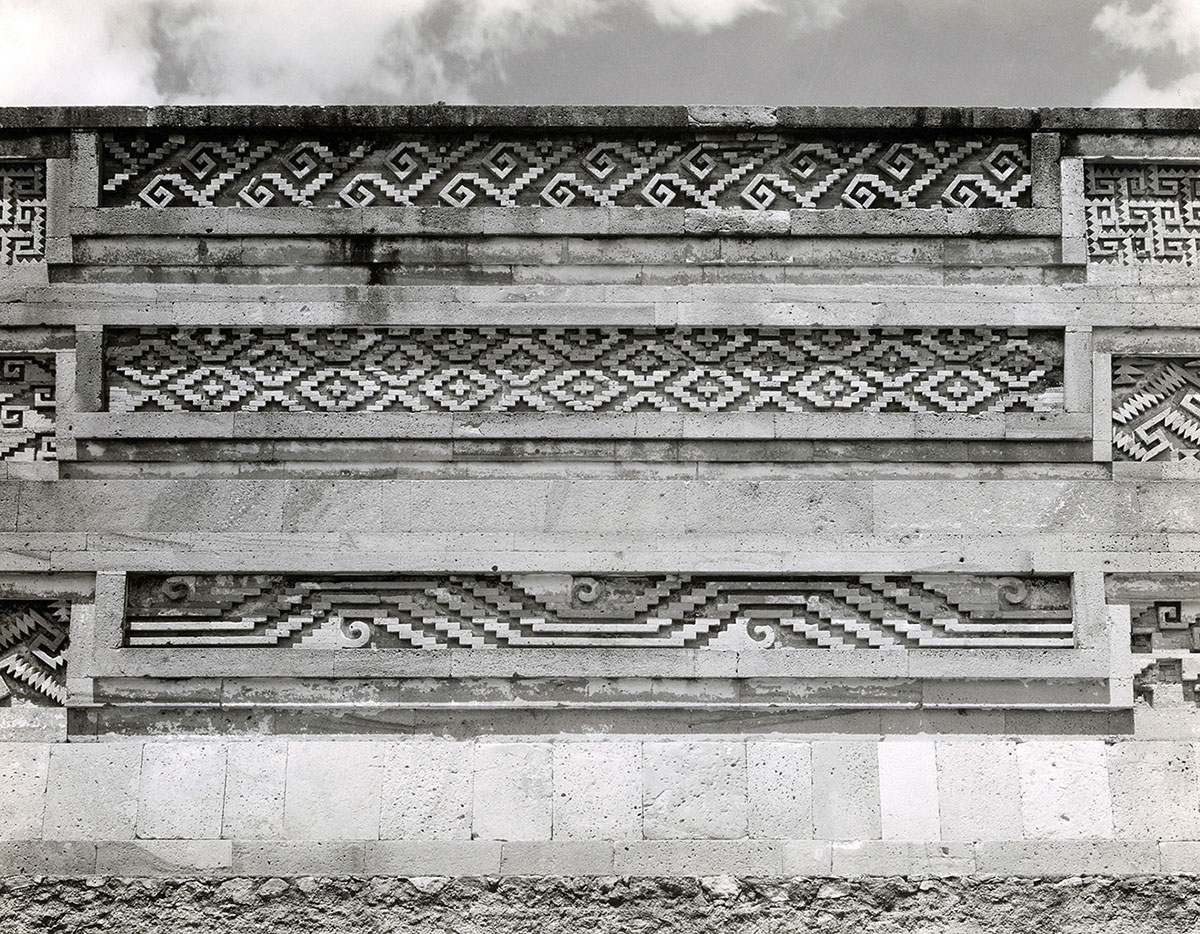Tierra, a Latin American Landscape, is at Throckmorton Fine Art in Midtown East, Manhattan Tuesday – Saturday, from June 28 – September 15, 2018.
Tierra, Earth, the cradle of the people. Mexican Aztec and Maya, and Peruvian Inca built great cities in the tierra and then some of them disappeared.
Their geometries inspire art. Their masks stir fears. Their scale makes you wonder what marvelous civilization did this, what was it like full of people, and where did they all go?
Tierra, a Latin American Landscape
The ruins of the ancient cities of Latin America are monumental. Even so what we see today peeking through the jungles and forests is just the tip of an iceberg.
Many of these photographs are no longer just vintage. Some have become historic because the scenes in some of these old photographs have been overrun or even destroyed.
Marilyn Bridges’ aerial images of Teotihuacan, Nazca and Tulum show gigantic earth sculptures only visible from the sky that have now been largely erased from the plains by off-road motorcyclists.

The exhibition includes work by the father of Latin American photography, Mexican artist Manuel Álvarez Bravo.
There are several very early photographs from the 1850s made by French archeologist Claude-Joseph Désiré Charnay. Photography only began in 1839 so these pieces are from the very beginning of the art.
The early European archeologist theme continues in pioneer work by Italian explorer Teobert Maler, British diplomat and archeologist A.P. Maudslay, French photographer Abel Briquet, and the American photographer of Mexico, C.B. Waite.
Martín Chambi, the first major indigenous Latin American photographer, gives an insider’s view of the Quechua-speaking people in Cuzco, the old Inca capital.
There is also work by Hugo Brehme (Mexican), Laura Gilpin the American photographer of Native Americans and Edward Weston, the iconic American photographer who spent some time in Mexico.
Looking at the exhibition, you can’t help but wonder what will happen to us. These people were so clever and strong, but they disappeared back into the forest and the jungle. The consensus is that overpopulation, environmental degradation and climate change brought these great societies to an end. Sound familiar?
A thousand years from now, will anyone look at the ruins of our civilization with similar admiration?
A Photography and Sculpture Collection
One of the interesting things about the Throckmorton collection is how it combines vintage photography with pre-Colombian sculpture and artifacts.
So the Gallery has photos of Mayan ball courts, and has some of the stone balls that were given as trophies to winners of the ball game. Losers were killed.
Asia – Pacific
In the 1960s, I went to the Angkor Wat temple city in Cambodia. There and in the Mayan cities, one sees sculptures of the serpent lining pathways. The serpent, with its ability to regenerate itself, is a human archetype, but seeing it used in similar ways in Asia and Latin America is striking.

You can also see similarities between the interlocking geometries of Mayan temple art and similar forms on Chinese temples and porcelains.
Given his expertise in both pre-Columbian and ancient Chinese sculpture, I asked Spencer Throckmorton whether he thought the similarities were more than coincidence. He said he believes there was trans-Pacific interaction. The visual hints are appealing.
If you love the Americas, these glimpses of a glorious past in nuestra tierra are worth seeing.
Throckmorton Fine Art
145 East 57th Street, New York, NY 10022
3rd Floor
(between Lexington & Third Ave)
Midtown East, Manhattan
(212) 223-1059
Tuesday – Saturday: 11 am – 5 pm
Subway
- (4) (5) (6) to Lexington Ave
- (N) (R) (W) to Lexington Ave – 59th St
- (E) to Lexington Ave – 53rd St
- (M) to Lexington Ave – 53rd St
For more information, visit www.throckmorton-nyc.com
